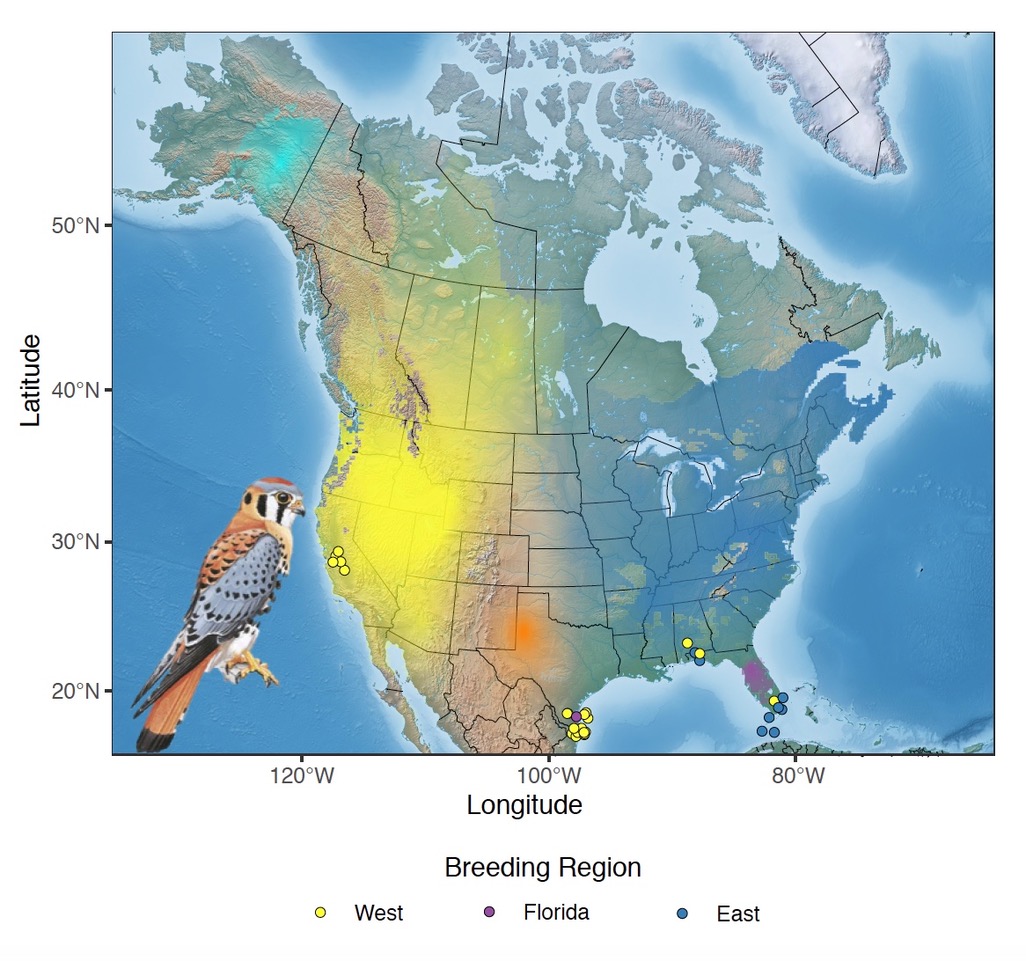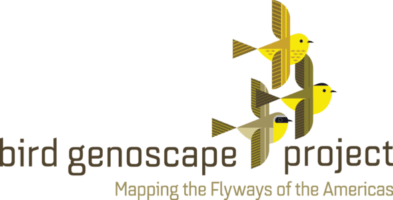American Kestrel
All species of North American raptors, including the American Kestrel (Falco sparverius), are monitored during migration by counting individual birds at watch-sites that are stationed along major migratory flyways. Scientists then use this migration-count data to estimate and monitor changes in population trends. However, American Kestrels are shifting the timing and patterns of their migratory movements, which could make inferring population trends from migration-counts difficult. If we want to maintain the utility of migration-counts into the future, we need to develop methods for understanding which populations of American Kestrels are being monitored at migration watch-sites, and how migratory movements of those populations are changing over time. Once we can track specific breeding populations across the annual cycle, then we can determine which populations are declining and where they are most limited.
With the help of numerous partners (see below), the Bird Genoscape Project developed high-resolution molecular markers to identify breeding populations of American Kestrels in North America. We scanned the genomes of 197 individuals from 12 sampling locations across the breeding range to identify population structure. In total, we’ve identified the existence of 5 genetically distinct populations of the American Kestrel – East (blue), West (yellow), Texas (orange), Florida (purple), and Alaska (aqua). These 5 populations can serve as the foundation for American Kestrel conservation and management.
Our work is ongoing with the American Kestrel, as we continue to collect additional samples across the wintering grounds to hopefully be able to discern where the Alaska (aqua) and Texas (orange) breeding populations over winter.

The five genetically distinct populations of American Kestrel (Falco sparverius) across the breeding range. Individuals sampled on the wintering grounds (colored dots) were then able to be assigned back to three of these respective breeding ground genetic clusters, allowing us to better understand the migratory connectivity of American Kestrel populations. Genetic clusters are visualized as transparency levels of different colors overlaid upon a base map from Natural Earth (naturalearthdata.com) and clipped to the species breeding range using an eBird shapefile. See below for details of samples used. American Kestrel Image by © Birds of the World
Read below to learn about our work constructing the American Kestrel genoscape and how we use genetic information to better understand Kestrel migration:
Ruegg KC, Brinkmeyer M, Bossu CM, et al. 2021. The American Kestrel Genoscape (Falco sparverius): Implications for Monitoring, Management, and Subspecies Boundaries. Ornithology 138: 1-14
Bossu CM, Heath JA, Kaltnecker GS, Helm B, and KC Ruegg. 2022. Clock-linked genes underlie seasonal migratory timing in a diurnal raptor. Proceedings of the Royal Society B 289: 20212507
Check back later for access to the sequencing data.
The following individuals were instrumental in the development of the genoscape manuscript:
Michaela Brinkmeyer, Boise State University
Rachel A. Bay, UC Davis
Eric C. Anderson, Southwest Fisheries Science Center
Clint W. Boal, US Geological Survey, Texas Cooperative Fish & Wildlife Research Unit
Russell D. Dawson, U of Northern British Columbia
Amber Eschenbauch, Central Wisconsin Kestreal Research
Christopher J.W. McClure, The Peregrine Fund
Karl E. Miller, Florida Fish & Wildlife Conservation Commission
Lance Morrow, Shenandoah Valley Raptor Study Area
Jill Morrow, Shenandoah Valley Raptor Study Area
M. Davis Oleyar, HawkWatch International
Bill Ralph, Yosemite Area Audubon Society
Sarah Schulwitz, The Peregrine Fund
Ted Swem, US Fish and Wildlife Service
Jean-Francois Therrien, Hawk Mountain Sanctuary
Rich Van Buskirk, Pacific University
Julie A. Heath, Boise State University
The following individuals & groups contributed samples, equipment, or laboratory space to help develop the genoscape:
J. Pagel
A. Hunt
Little Gap Raptor Center
Utilized American Kestrel Samples
Explore the map below to see when, where, and who collected the samples to build the genoscape.
